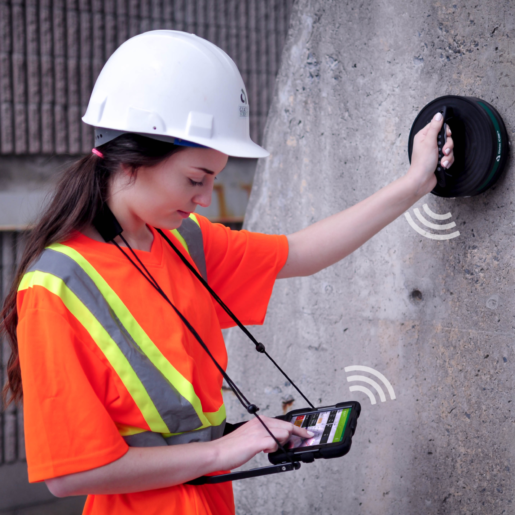
Assessing concrete to prevent collapses
July 27, 2021
By CCE
The Florida condominium collapse highlights the need for earlier detection.
In the wake of the recent collapse of a condominium building in Surfside, Fla., the City of Miami has asked all owners of buildings taller than six stories to retain licensed structural engineers’ services to check their properties for visible signs of distress by mid-August.
The Surfside building collapsed due to major structural damage; the concrete slab below the pool deck and underground garage had cracked. The high-profile incident is just one of many, however, that have resulted from a lack of sufficient insight into the ‘health’ of concrete structures’ durability.
As many Canadians know, in June 2012, part of a rooftop parking deck at Algo Centre Mall in Elliot Lake, Ont., collapsed into the building and killed two people. The Ontario Provincial Police (OPP) selected Ottawa-based Giatec to assist with materials analysis and structural inspection. Giatec’s iCor device helped identify existing deterioration in the mall’s structure as a result of corrosion.
“These tragedies could have been prevented if more in-depth and advanced testing of the state of concrete were done to detect early signs of corrosion, helping avoid loss of life, serious injury and catastrophic structural damages,” says Andrew Fahim, head of research and development (R&D) at Giatec and committee lead for ASTM WK76846 and ASTM G01.11.5, New Test Method for Measuring Corrosion Rate of Uncoated Reinforcing Steel in Concrete. “More accurate information can help building owners accelerate their rehabilitation and maintenance operations.”
The ASTM testing standard addresses multiple electrochemical techniques for measuring rate of corrosion and polarization resistance in the field, including galvanostatic, potentiostatic, potentiodynamic and electrochemical impedance spectroscopy techniques.
Giatec’s device, for its part, uses connection-less electrical pulse response analysis (CEPRA) technology to assess corrosion without requiring invasive means, such as physically attaching to the rebar by drilling into the concrete. This way, the condition of major structures can be measured without damaging them or compromising their physical integrity. In 2019, the National Association of Corrosion Engineers (NACE) recognized iCor with its Corrosion Innovation Award.
Factors such as the rate of steel corrosion can contribute to the deterioration of concrete structures, resulting in their collapse. Testing for these properties can help fast-track the maintenance these buildings need before catastrophe occurs, potentially saving lives.
With files from Giatec.
